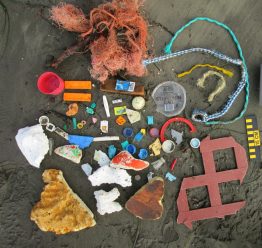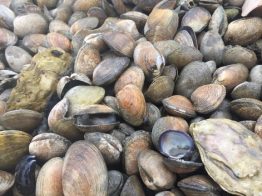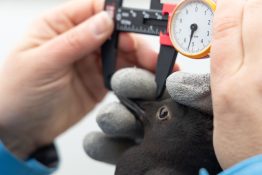Citizen scientists recorded trash on Pacific Northwest beaches, from southern Oregon to Anacortes, Washington, to contribute to the growing study of marine trash. A study by the University of Washington analyzed 843 beach surveys and found that certain beaches, and certain areas of a single beach, are “sticky zones” that accumulate litter. The study was published online Aug. 11 in Marine Pollution Bulletin.
Read more at UW News »An 85-year-old fishing club’s records reveal the secrets of Puget Sound salmon
Few people would consider launching a boat into Seattle’s Elliott Bay on a winter morning. It’s cold, dark, and more often than not, wet. But the steadfast members of Seattle’s Tengu Club, a Japanese American fishing club that held its first annual salmon derby in 1946, can reliably be found doing just that. In the 85 years since it was founded, participants have gathered on the shores of West Seattle each winter to reconnect and fish for resident Puget Sound Chinook salmon, also known as blackmouth because of their dark-colored gums.
Read more »Whodunnit? Uncovering the mystery of a tiny toxin killing shellfish in Puget Sound
Around 50 years ago, Pacific oysters in the Puget Sound started dying at noticeably increasing rates during the summer, causing residents and scientists to wonder why. Researchers in what is now the School of Aquatic and Fishery Sciences investigated many factors that may cause mortalities such as bacteria, reproductive stress related to spawning and changes in other environmental conditions. The evidence collected pointed towards stress on the animals when they spawn, as the Pacific oyster spends a lot of their energy on reproduction.
Read more »How computer models and statistics are shaping modern ecology
When we think of wildlife ecologists, we might envision researchers traipsing through meadows, fording rivers, and tracking elusive predators on daring field expeditions. While some of these images may be accurate, those who work in quantitative ecology and conservation know that some of the most groundbreaking and essential ecological research takes place behind the computer screen, using statistics, mapping, and mathematical models.
Read more »‘Safety in numbers’ tactic keeps Pacific salmon safe from predators
Animals that live in groups tend to be more protected from predators. That idea might be common sense, but it’s difficult to test for some species, especially for wild populations of fish that live in the ocean. A new University of Washington study that leverages historical data has found unique support for the “safety in numbers” hypothesis by showing that Pacific salmon in larger groups have lower risk of being eaten by predators.
Read more at UW News »





